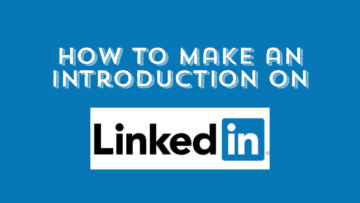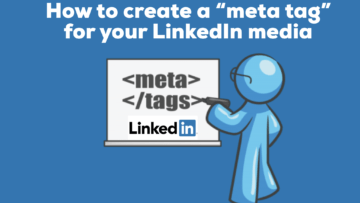Invisible disability or invisible ability? Individuals have gifts and talents they can share in the workforce and seek an opportunity to contribute.
Everyone has a unique personal journey, so it’s crucial to tailor strategies based on individual circumstances and goals.
In case you didn’t know, May is Mental Health Awareness Month, May 7th is National Barrier Awareness Day, and May 18th is Global Accessibility Awareness Day.
According to National Day Calendar, “36 million Americans suffer from some form of handicap. Eighty percent of Americans will experience some disability in their lifetime.”
If you are a job seeker and have an invisible disability or know someone who does, you are invited to join the Great Careers Network for these and other LinkedIn workshops and career professional development events:
May 18th, 9-10:30 AM ET
Recruiter on Call with Jobs with Myles Wallace of Peak Performers (focused on workers with disabilities)
May 23rd, 5-6:30 PM ET
Smarter Job Searching: How to Land Your Dream Job as a Neurodivergent Job Seeker
When preparing for employment, individuals need to consider several key aspects.
- Self-awareness: Understand strengths, weaknesses, limitations, and accommodation needs.
- Disclosure: Decide whether and when to disclose the disability to potential employers.
- Rights and protections: Be familiar with relevant laws, including the Americans with Disabilities Act (ADA).
- Accommodations: Research what accommodations would be helpful to perform the job effectively.
- Job search strategy: Focus on inclusive companies and positions that match abilities.
- Network: Build connections and seek support from disability-focused organizations and professional networks.
- Resume and interview preparation: Highlight your skills and experiences while considering how to address potential concerns related to your disability.
- Confidence and advocacy: Believe in yourself, advocate for your needs, and communicate your value to employers.
- Resources and support: Utilize disability services, vocational rehabilitation programs, and online resources for guidance.
- Continued learning: Stay updated on disability-related advancements and adapt to evolving workplace practices.
When it comes to disclosing or not disclosing an invisible disability during a job interview, individuals have different considerations and choices. Here are some factors to keep in mind.
- Legal protections: Understand the laws and regulations in your locale that protect individuals with disabilities, prohibit discrimination based on disabilities, and ensure reasonable accommodations are provided.
- Timing: Consider the appropriate timing of the disclosure. Generally, disclosing at the interview stage is not required unless accommodations are needed during the interview process. Consider if you want the employer to fall in love with you and offer a job before disclosing or if another time is better.
- Personal comfort: Evaluate your comfort level by disclosing your personal information. You have the right to privacy, and it’s your decision whether or not you want to disclose. Determine how disclosing or not disclosing will affect your well-being, performance, and overall job satisfaction.
- Job requirements: Assess whether your disability might affect your ability to perform essential job functions. If it does not impact your performance, disclosing may not be necessary. However, if accommodations are needed to fulfill the job requirements, consider discussing your needs with the employer.
- Company culture and inclusivity: Research the company’s commitment to diversity, equity, inclusion, belonging, and accessibility. Some organizations prioritize creating an inclusive environment, which may encourage you to feel more comfortable disclosing your disability.
- Support systems: Explore available support systems, such as disability resource centers, vocational rehabilitation agencies, or disability-focused networks. These resources can offer guidance on disclosure decisions and workplace accommodations.
- Individual circumstances: Consider the specific nature of your disability, its potential impact on the job, and any accommodations you might need. Weight these factors against your comfort level and the overall workplace environment.
There is no right or wrong answer when it comes to disclosing your disability. It’s a personal decision that should be based on individual needs, circumstances, and comfort level.
As a former K-12 teacher with nine certifications, including special education, and as a parent of an adult Autistic child, it’s important to create awareness, engage in learning, and advocate to empower individuals to overcome challenges to earn a living.
Here is an article I wrote that includes links to prior articles that may be of interest and provide useful resources: How to Align the Great Resignation with Company Culture, Autism, & Neurodiversity.
NEXT STEPS
- Subscribe to my newsletter on LinkedIn for bright ideas to manage your career.
- Join as a member at https://httpsgreatcare.wpenginepowered.com/membership of the #1 business networking association on the Philadelphia Business Journal’s Book of Lists three years in a row!
- If you need a resume or LinkedIn profile to get you to your next step, book a call to chat!
- Follow #GreatCareersPHL
AUTHOR BIO
Lynne M. Williams is the Executive Director of the Great Careers Network, a volunteer-run 501(c)3 nonprofit organization that provides career development and networking connections for 1) job seekers in career transition, including veterans, and 2) employed and self-employed for career management.
Aside from writing keyword-focused content for ATS resumes and LinkedIn profiles, Lynne is currently writing her doctoral dissertation on LinkedIn for Job Seekers. She is a contributing author on “Applying to Positions” in Find Your Fit: A Practical Guide to Landing the Job You Love, along with the late Dick Bolles, the author of What Color is Your Parachute?, and is also a speaker on career topics.
This article is also published on: vista.today, montco.today, delco.today, bucksco.today, and in the author’s LinkedIn newsletter. A list of articles can also be found in a Google doc.




